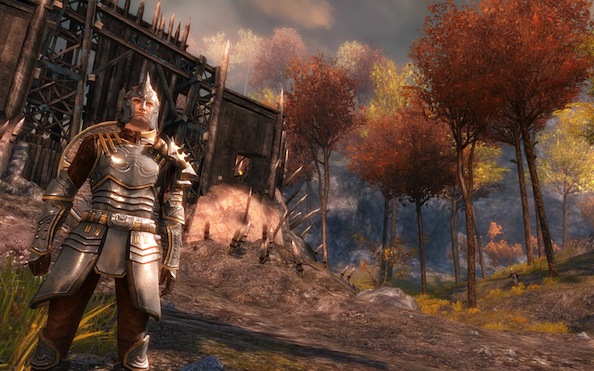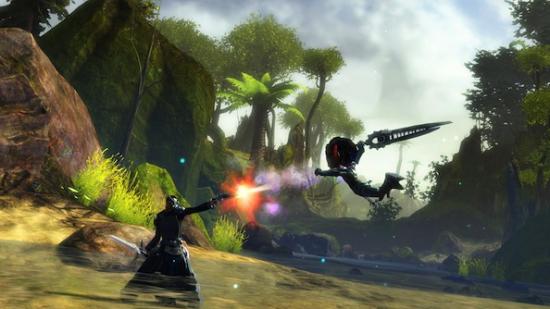So, Guild Wars 2 is good. Very, very good. It’s easily one of the best MMOs I’ve ever played. We don’t do reviews around here (yet…) but take this is my whole-hearted recommendation: I’ve been playing MMOs for what seems like forever. Guild Wars 2 is the most fun I’ve had in one in years.
But Guild Wars 2 isn’t just good. It’s an important game – at least as important as the launch of the original World of Warcraft.
Why?
Most importantly, it’s successful. Guild Wars 2’s launch and subsequent player interest should be the envy of the MMO industry. A million copies sold on pre-orders, 400,000 players playing concurrently, and sales halted so Arenanet could put the required servers in place.
After a year of high profile false-starts (it feels mean calling them failures) including The Old Republic and The Secret World, Guild Wars 2 appears to be beating expectations. Players really like this game. That feels rare for an MMO launch.
That success story can only get better. Guild Wars 2 doesn’t rely on a subscription fee. That means gamers and the industry aren’t going be subjected to the slow torture of declining subscriber base announcements that have plagued World of Warcraft, the Secret World and Star Wars: The Old Republic.
There’s more to it, though. Guild Wars 2 isn’t just important because its successful. It’s important because the route to that success was via innovation, player-centric design, and gorgeous, gorgeous art.
There are dozens of examples of how Guild Wars 2 innovates. I want to highlight one.
It’s about grouping. Guild Wars 2 assumes that you’re playing an MMO because you want to see and interact with other humans. You’re almost always playing with someone in Guild Wars 2; you’re constantly bombarded with notes of new events or guided to new areas with tasks to complete. These groups aren’t formal – they’re improvised according to what’s happening in the world around you.
Making two or more people play together is a hard problem that all MMOs face. It’s a problem with roots in how players think about themselves, the systems and interfaces you give them to play with, the mechanical and artistic design of the world, and most importantly, player liquidity. Some games closet off their group content in instances, using group finders, dungeon tools, raid finders and zone chat to arrange bespoke parties.
Guild Wars 2’s genius is in almost entirely rejecting that. Instead, Guild Wars 2’s world is its group finder. Its event system nudges players together. Its quests and areas have objectives loose enough for you to work with a friend, without waiting for them to find the last of the ten lion ears you’ve been collecting.
Even better: it’s eliminated any design punishments for playing together (high level players can help low-level players, there’s no dependencies like tanks and healers, and XP for kills is shared equally for anyone who gets involve), and it throws rewards for playing as a team around like confetti.
This is brilliant, brave game design. It flies in the face of orthodoxy.But it’s not rocket science. It’s also what MMO players (both veteran and ones that dabble) have been asking for for years. Instead of solving these core problems, the MMO industry relied on cloning what World of Warcraft did before.
And that’s just not good enough. Not today, not ever.
That’s why I think Guild Wars 2 is so important. The lesson I hope the rest of the industry takes from Guild Wars 2 shouldn’t be a set of easily copied design decisions. The next wave of MMOs shouldn’t just focus on group content, ditch the subscription fee and throw in some three way world vs world.
The lesson should be that players want, and and are willing to reward, innovation. Every MMO developer should look to Arenanet and NCSoft and think, not “how can we do that,” but “how can we make MMOs better.”
